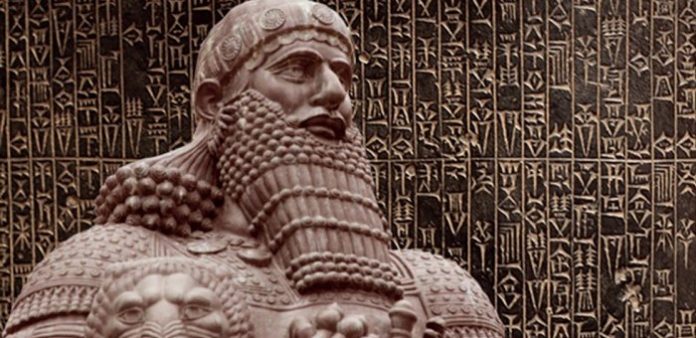The owner of the first laws made in history: Who is Hammurabi?
The laws, written on a black stone board, have survived to our time. It is now in the Louvre Museum in Paris.

(Between the 18th and 17th centuries BC) Ancient Babylonian Ruler (1730-1680 BC) Hammurabi was the most national of the ancient Babylonian kings. Perhaps his greatest achievement was his laws, which were the first in history. It was a set of rules governing how to behave and various human activities. The law provided for the builder's execution if a house collapsed and caused the death of its owner. If the collapse caused the death of the landlord, the builder's son should be executed. If a kind person breaks another kind person's bone, he should break his own bone. But if he broke a common man's semolina, a silver coin penalty would be paid.
Hammurabi (c. 1810 – c. 1750 BC) was the sixth Amorite king of the Old Babylonian Empire, reigning from c. 1792 to c. 1750 BC. He was preceded by his father, Sin-Muballit, who abdicated due to failing health. During his reign, he conquered Elam and the city-states of Larsa, Eshnunna, and Mari. He ousted Ishme-Dagan I, the king of Assyria, and forced his son Mut-Ashkur to pay tribute, bringing almost all of Mesopotamia under Babylonian rule.
In fact, the laws were quite strict, but there were difficult times and the law ensured the highest level of law order in the country, which had been turbulent for a long time. The laws, written on a black stone board, have survived to our time. It is now in the Louvre Museum in Paris.
Hammurabi also had canals, temples, roads, and libraries built. He expanded his kingdom, left no one to touch, and intimidated his neighbors with his power.
The Amorite king Hammurabi, who ascended the Babylonian throne circa 1792 BC, was not only an ambitious warrior but also an astute ruler who exalted the traditions of Sumer, Akkad, and other lands he dominated. He could be ruthless toward his enemies, and he could raze cities that resisted him. However, he did not neglect to ensure unity and stability throughout his empire by creating laws that apply to all his subjects.
The Code of Hammurabi was based in part on Sumerian laws, but for some crimes, such as injury, committed by commoners, unlike the Sumerian laws, harsher penalties were provided, such as execution or mutilation. Like the ancient Israelites, the Amorites practiced the principle of "eye for an eye, a tooth for a tooth" for those who harm others.
The laws enacted by Hammurabi also granted certain rights to women, commoners, and slaves. For example, women who were abused by their husbands could file for divorce, and all defendants were wary of making false statements, thanks to a law that provided for the death penalty for perjury. Putting laws in writing prevents judges from adjudicating indiscriminately; It consolidated the idea of universal and lasting justice. The Code of Hammurabi did not allow one to avenge oneself; this alone made a great contribution to the security of civil society.
The stele with the Code of Hammurabi is one of the oldest and best-preserved written laws in history, which appeared in Mesopotamia around 1760 BC. Written in cuneiform on a cylindrical stone of about two meters, the laws are exactly 282 articles, but 33 of these articles (items 66-99) are currently unreadable.
